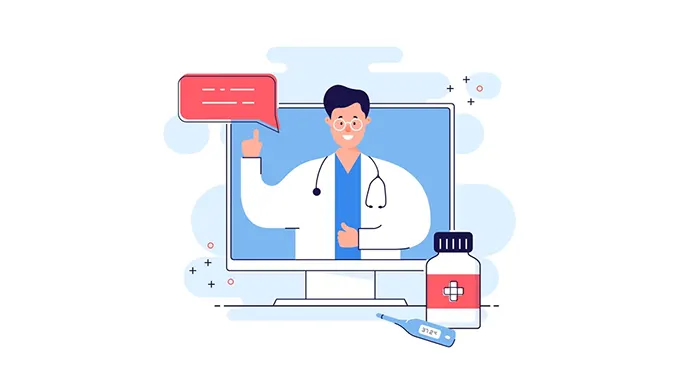Post-market surveillance (PMS) is a critical aspect of the pharmaceutical regulatory framework, ensuring that drugs remain safe, effective, and of high quality after they enter the market. In Indonesia, the Indonesian Food and Drug Authority (Badan Pengawas Obat dan Makanan, BPOM) is the primary regulatory body responsible for overseeing post-market surveillance. This article provides an in-depth look at the post-market surveillance process in Indonesia, its significance, methodologies, challenges, and recent advancements. Visit pafikotaargamakmur.org
The Importance of Post-Market Surveillance
Post-market surveillance is essential for several reasons:
- Safety Monitoring: Ensures that any adverse drug reactions (ADRs) or side effects that were not identified during clinical trials are detected and managed promptly.
- Quality Assurance: Verifies that pharmaceutical products continue to meet quality standards throughout their lifecycle.
- Regulatory Compliance: Ensures ongoing compliance with regulatory requirements and Good Manufacturing Practices (GMP).
- Public Health Protection: Protects public health by identifying and addressing potential risks associated with pharmaceutical products.
Regulatory Framework for Post-Market Surveillance
Indonesian Food and Drug Authority (BPOM)
BPOM is the key regulatory body in Indonesia responsible for conducting post-market surveillance of pharmaceutical products. Its main functions include:
- Monitoring: Regular monitoring of drugs available in the market to ensure their safety, efficacy, and quality.
- Reporting Systems: Implementing systems for the reporting of adverse drug reactions and other product-related issues.
- Inspections: Conducting inspections of manufacturing facilities, distribution channels, and retail outlets.
- Testing: Performing laboratory tests on drug samples to verify their quality.
Post-Market Surveillance Process
Adverse Drug Reaction (ADR) Reporting
One of the core components of post-market surveillance is the reporting of adverse drug reactions. BPOM has established a comprehensive ADR reporting system that includes:
- Healthcare Professional Reports: Encouraging healthcare professionals to report any adverse reactions they observe in their patients.
- Consumer Reports: Allowing consumers to report adverse reactions they experience directly to BPOM.
- Electronic Reporting System: Providing an online platform for easy and efficient reporting of ADRs.
Periodic Safety Update Reports (PSURs)
Pharmaceutical companies are required to submit Periodic Safety Update Reports (PSURs) to BPOM. These reports provide updated information on the safety profile of the drug, including:
- Summary of ADRs: A summary of adverse reactions reported since the last PSUR.
- New Safety Data: Any new safety data or information that has emerged.
- Risk Management Plans: Updates on risk management plans and any actions taken to mitigate risks.
Market Surveillance
BPOM conducts regular market surveillance activities to ensure that drugs available to the public meet regulatory standards. These activities include:
- Sampling and Testing: Random sampling and laboratory testing of drugs from pharmacies, hospitals, and other distribution points to verify their quality.
- Compliance Inspections: Inspecting manufacturing facilities, distribution centers, and retail outlets to ensure compliance with GMP and other regulatory requirements.
- Recall Monitoring: Monitoring the effectiveness of product recalls and ensuring that recalled products are removed from the market.
Risk-Based Surveillance
BPOM employs a risk-based approach to post-market surveillance, prioritizing resources based on the potential risk posed by different drugs. Factors considered include:
- Therapeutic Class: Higher-risk therapeutic classes may require more intensive monitoring.
- Usage Patterns: Drugs used by vulnerable populations (e.g., children, elderly) or in high volumes are closely monitored.
- Past Performance: Products or manufacturers with a history of non-compliance or safety issues receive increased scrutiny.
Challenges in Post-Market Surveillance
Resource Constraints
Ensuring comprehensive post-market surveillance requires significant resources, including skilled personnel, advanced laboratory facilities, and robust IT systems. Limited resources can hinder the effectiveness of surveillance activities.
Counterfeit and Substandard Drugs
The presence of counterfeit and substandard drugs in the market remains a significant challenge. These products can evade standard surveillance mechanisms, posing serious risks to public health.
Reporting Compliance
Encouraging healthcare professionals and consumers to report adverse drug reactions consistently can be challenging. Underreporting of ADRs can limit the effectiveness of the surveillance system.
Rapid Market Changes
The fast pace of pharmaceutical innovation and the introduction of new drugs present ongoing challenges for post-market surveillance. Keeping up with these changes requires constant adaptation and updating of surveillance methodologies.
Recent Advancements in Post-Market Surveillance
Digital Reporting Systems
BPOM has implemented digital reporting systems to streamline the reporting of adverse drug reactions and other product-related issues. These systems improve the efficiency and accuracy of data collection and analysis.
Advanced Analytical Techniques
The use of advanced analytical techniques, such as data mining and machine learning, has enhanced BPOM’s ability to detect patterns and trends in adverse drug reactions. These techniques enable more proactive identification of potential safety issues.
International Collaboration
BPOM collaborates with international regulatory bodies and organizations to share information and best practices. This collaboration helps improve the effectiveness of post-market surveillance and ensures that Indonesia’s regulatory framework aligns with global standards.
Public Awareness Campaigns
BPOM has launched public awareness campaigns to educate healthcare professionals and consumers about the importance of reporting adverse drug reactions. These campaigns aim to increase reporting compliance and enhance the overall effectiveness of the surveillance system.
Future Directions for Post-Market Surveillance
Strengthening Regulatory Capacity
Enhancing the capacity of BPOM and other regulatory bodies is crucial for ensuring effective post-market surveillance. This includes increasing resources for inspections, investing in advanced technologies for monitoring, and enhancing the skills of regulatory personnel.
Leveraging Technology
Leveraging technology can improve the efficiency and effectiveness of post-market surveillance. This includes implementing digital systems for drug registration, using data analytics for post-market surveillance, and employing blockchain technology to secure the pharmaceutical supply chain.
Enhancing International Collaboration
Collaborating with international regulatory bodies can help Indonesia adopt global best practices and standards. This can also facilitate the exchange of information and resources, improving the overall regulatory framework.
Conclusion
Post-market surveillance is a vital component of the Indonesian pharmacy system, ensuring that pharmaceutical products remain safe, effective, and of high quality after they enter the market. BPOM plays a crucial role in overseeing this process, conducting monitoring, reporting, inspections, and testing. While significant progress has been made, challenges remain in ensuring compliance, combating counterfeit drugs, and encouraging consistent reporting of adverse reactions. By strengthening regulatory capacity, leveraging technology, and enhancing international collaboration, Indonesia can continue to improve its post-market surveillance system, ensuring better health outcomes for its population.









